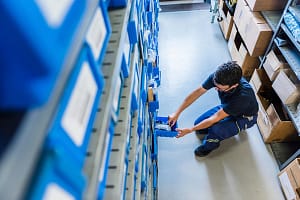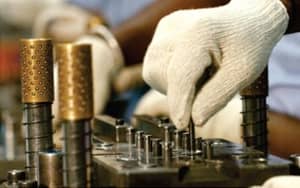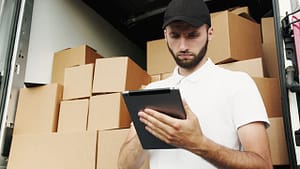Consumers are demanding fresher produce to be available in their stores 24/7. How can F&B companies keep up? A direct store delivery method is the answer. Let’s look at how technology can overcome the challenges this method may bring.
As modern consumers continue to demand more fresh food and beverage products, and restaurants and hotels cater for changing tastes and trends, many Food and Beverage (F&B) brands and wholesalers serving the retail and HORECA (Hotels, Restaurants, Cafes and Catering) are considering how their company can improve their delivery and quality management processes. Fast moving consumer goods have a short shelf life which can lead to potential revenue losses, as these items can go out of date very quickly. To address this challenge, F&B manufacturers and distributors using vans for direct store delivery (DSD) are increasingly turning to the latest mobile technology to meet the industry’s time-sensitive needs and complex logistical requirements.
What is the challenge?
As well as needing products to be delivered on time, most F&B companies are also facing the challenge of coordinating product inventory, delivery status, pricing changes and shelf labeling so as not to affect profit margins across the supply chain. Although consumers are globally minded, increasingly they want their produce to be locally sourced and are also focused more than ever on fresh and healthy foods — amid a 9.8% surge in organic sales.
Van sales staff need to receive their orders and routes for each day at the distribution center, load and check the orders onto their truck or van, deliver the order to the customer and pick up any returns. They should also have the ability to provide delivery confirmations and invoices before moving on to their next stop.
What is the solution?
To address these challenges, F&B companies are rapidly adopting apps used on any mobile device to efficiently communicate with their drivers and retail partners regarding inventory, payment, delivery status, customer support services and more – all in real-time. Route accounting software streamlines operations and increases efficiencies for direct store delivery for both delivery and receipt.
When van drivers and other field staff have a connected mobile device, they have instant access to GPS, routing management, product inventory data via barcode/RFID scanning, pricing and promotional alerts and customer history logs. When analyzed over time this data will improve operations, boost customer service and increase sales.
Automation can continue further when the software is connected to mobile printers providing printed produce delivery receipts and invoices right on the spot for accurate oversight and loss prevention.
When sales data is real time and visible, sales and production planning can be coordinated with consumer demand.
Importance of integration
When deciding to invest in DSD, it’s vital to think ahead about how your solution will work with your existing technology. Failing to consider how to integrate your route accounting software with your enterprise resource planning (ERP) software or inventory management system will create more problems. Lack of integration creates siloed data repositories and disconnected processes, holding back your entire organization. In order to fully realize potential benefits, manufacturers must create a connected environment, a platform, that will offer a streamlined, in-sync and consistent sales process across multiple channels including the web, mobile, telesales and more.
The DSD model is not new to the food and beverage industry, but it has taken a while for the industry to catch on. Combining the right technology and the right processes will enable FMCG companies to establish a quick and efficient delivery process.






Leave a Comment